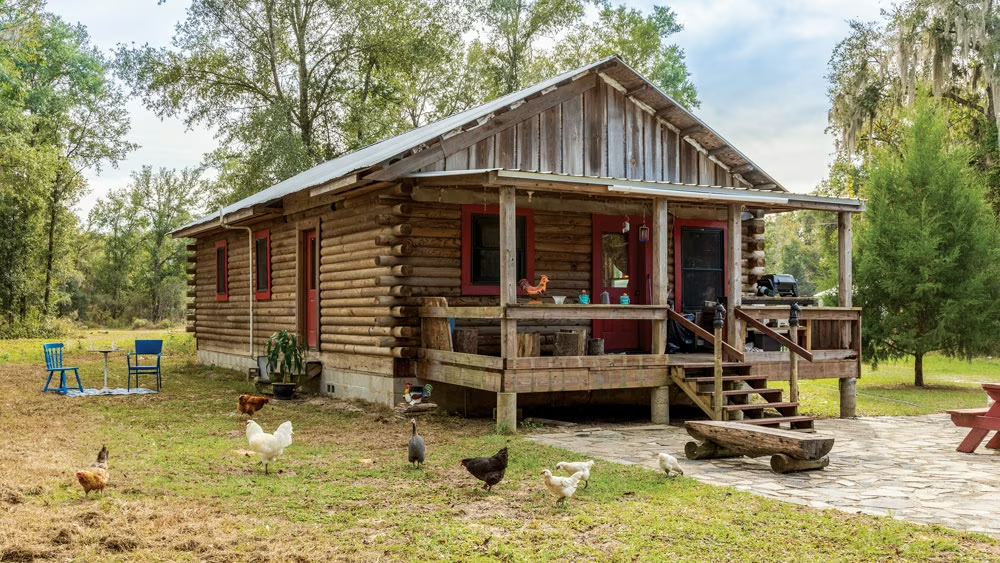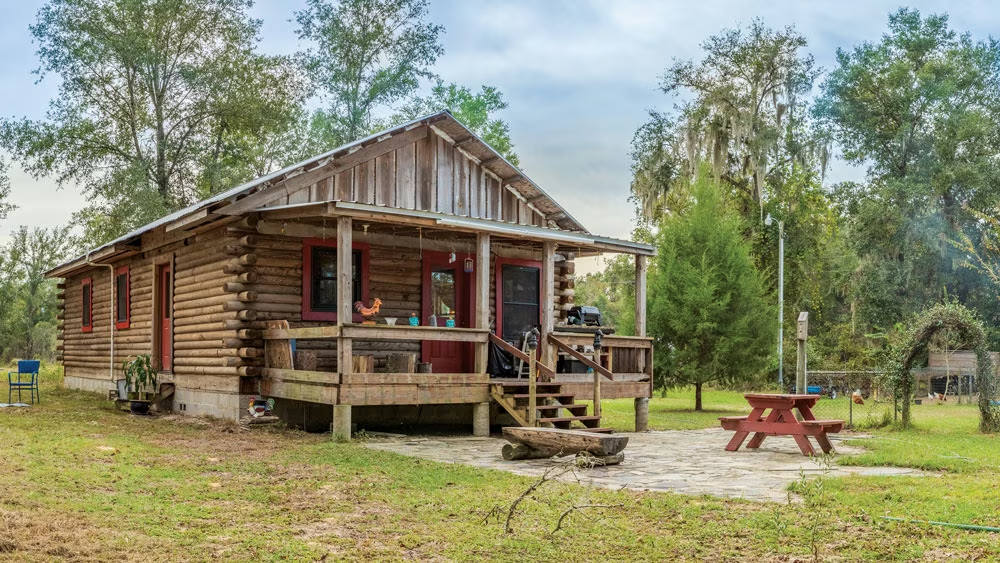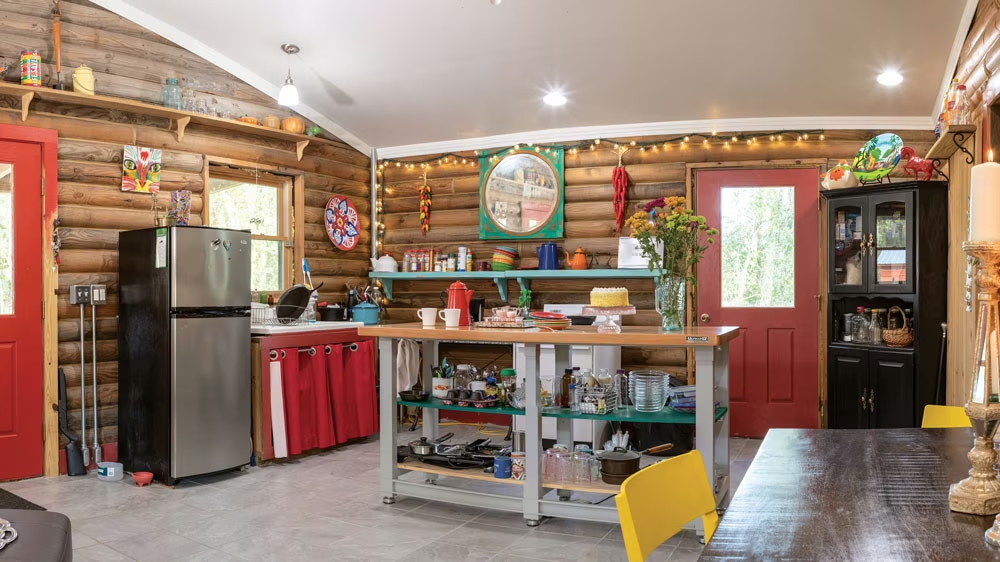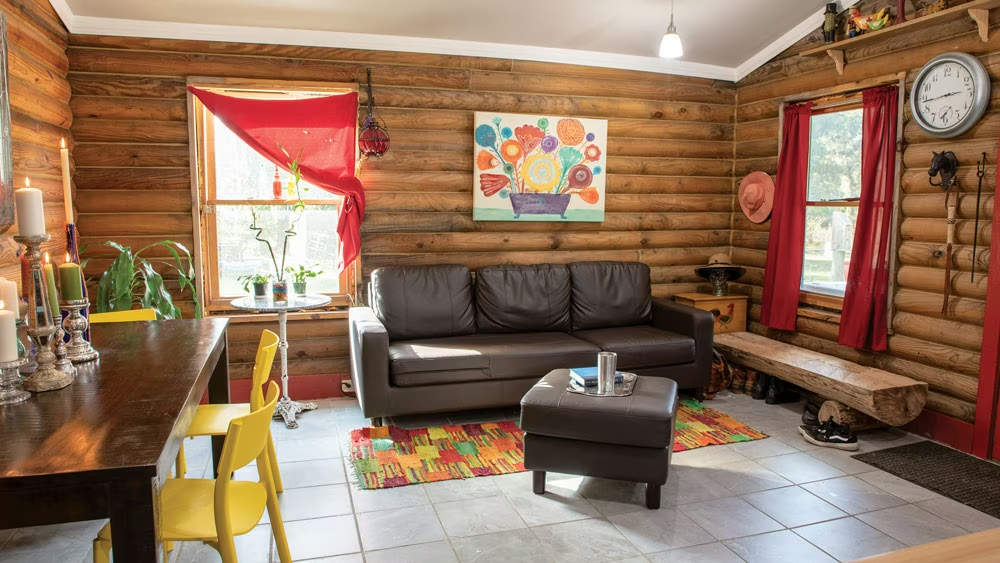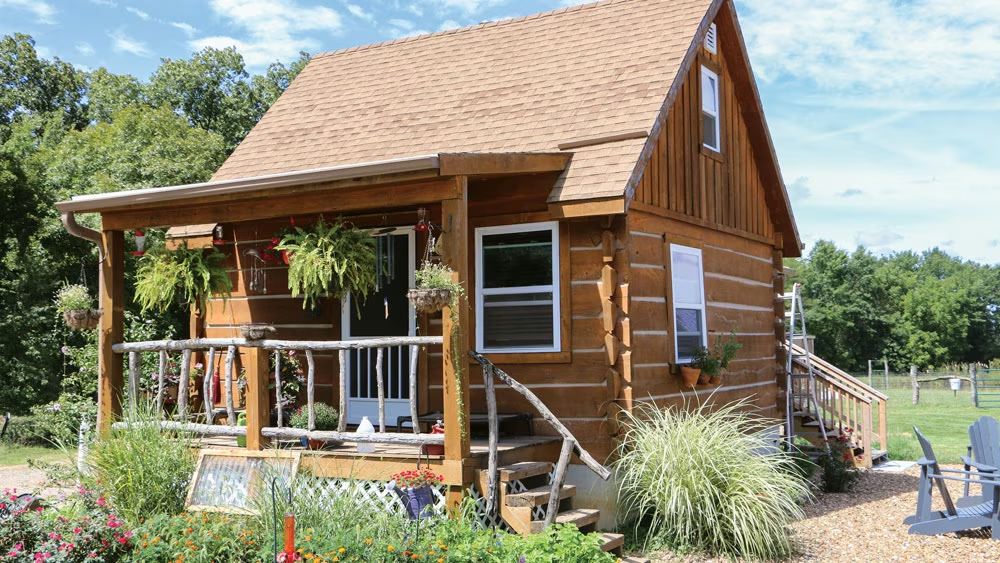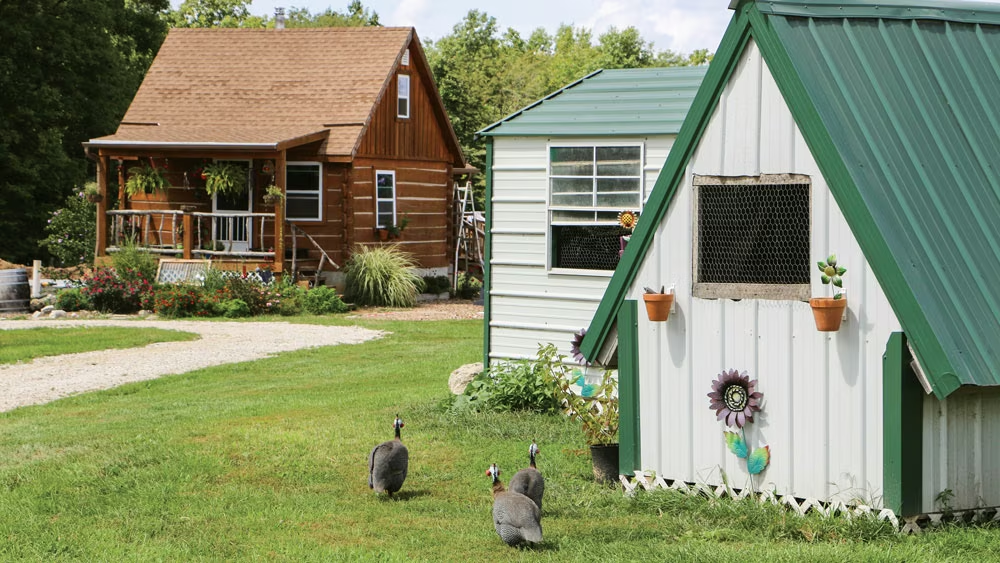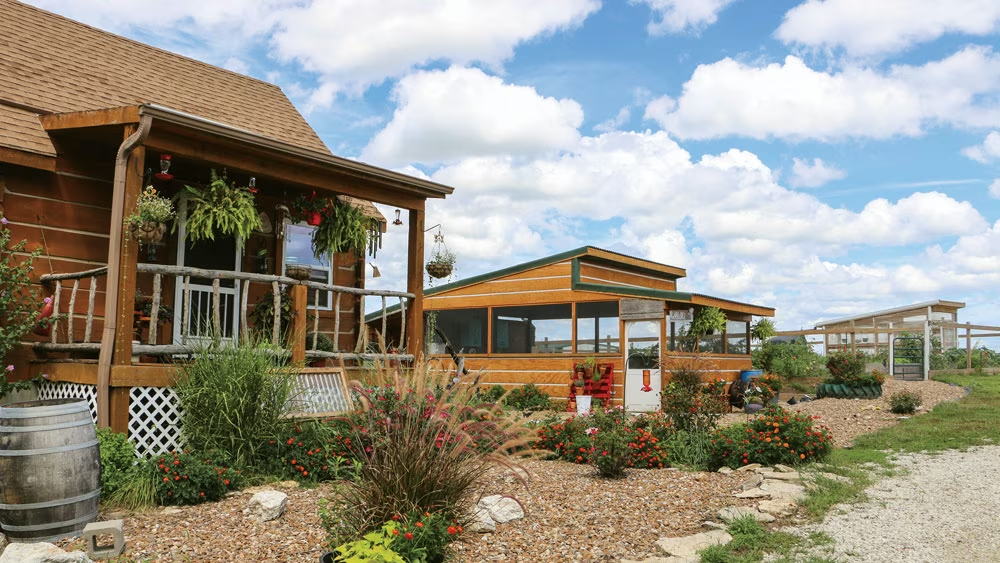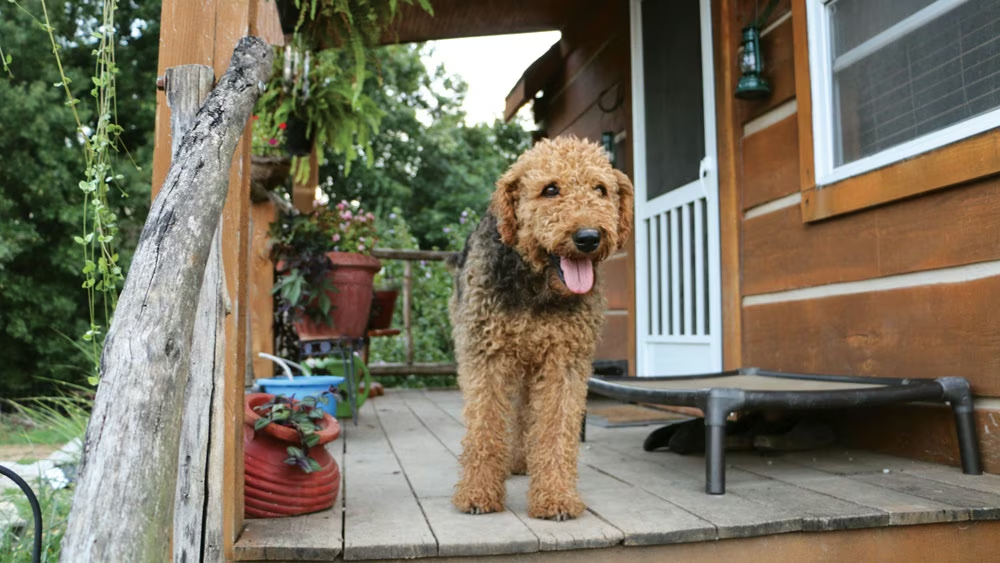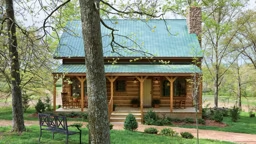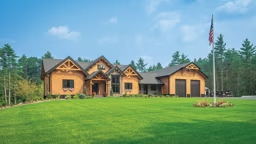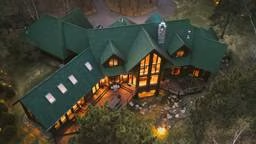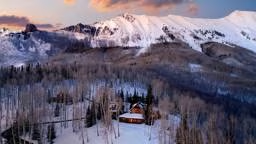Photos courtesy of Becky Sunshine and Doug & Stacy
Their locations may be vastly different, but for a couple of homesteaders in opposite parts of the country, the chance to leave the rat race behind was a siren call.
“We were city folks who decided the pace of life was just too fast,” says Doug, who, along with his wife, Stacy, set out to create a pioneer life in the 21st century. They purchased 11 acres in the Midwest and built a log cabin from trees felled on their land.
Becky Sunshine’s homestead in Florida features a log cabin, too — one she built from a kit.
For homesteaders like these, an autonomous lifestyle offers endless rewards.
Tour Becky Sunshine's Homestead
Becky Sunshine's: Chickens have free rein at Becky’s homestead, which provides everything she needs for her daily life.
What is Homesteading?
Basically, homesteading is a lifestyle that includes a commitment to self-sufficiency. For the hard-core, that means growing or raising all their food, supplying their shelter, creating their own power, producing their own clothes and living without making or spending money. Other homesteaders take a looser approach: They may work outside the home, purchase some goods and live in house that’s tied to a public utility. Living debt-free is a common theme for those in the growing movement.
Homesteading isn’t relegated to rural settings. Some suburbanites and city dwellers enjoy growing as much food as they can, bartering for necessities or otherwise simplifying their lifestyles as much as possible.
The Homestead Home
Log construction appeals to homesteaders. Becky Sunshine, who writes the blog “Becky’s Homestead” and creates regular YouTube videos, chose to build a log home on her two acres. “I love the look of log cabins,” she says, noting that building with logs is efficient. “With an ordinary house, you have to build the frame, then do siding on the outside, then drywall the interior,” she says. “With a log cabin, you can skip all that.” She has even written an e-book, “Becky’s Guide to Choosing Your Log Cabin Kit,” to help other homesteaders or wannabes.
Her two-bedroom home and Doug and Stacy’s 800-square-foot cabin follow the sage advice Becky offers: “Go small.” If you plan to build your own home — or do some of the work with the help of selected professionals — a small house is much more doable. Choose a simple gable roof instead of complicated dormers or roof lines. Make sure your home design accommodates any alternative systems you plan to use, such as wood heat, a rain catchment system or an outdoor shower.
If you’re going to can vegetables or fruit for long-term food supplies, plan for ample storage. A covered porch creates space to remove shoes or boots and work on outdoor projects, while being sheltered from the rain or hot sun.
Take the time to thoughtfully consider how much square footage you really need. “You can always add on later,” Becky advises. “Often, you don’t need more in the house, but you might need a barn or a workshop outside.”
Doug and Stacy’s homestead includes a cabin, greenhouse, a barn and a shed for their rainwater catchment tanks. They live with no solar power or wind turbines, use kerosene lanterns for light and a wood stove for heat, and yet they still manage to post daily on their “Off Grid with Doug and Stacy” YouTube channel. (They power their laptop computer through their car’s battery.)
Tour Doug and Stacy's Homestead
Doug and Stacy’s log cabin may be totally off the grid, but you can still keep up with their lives (and gain useful homesteading advice) by following their blog: offgridwithdougandstacy.com
Home-Grown and Raised
A vegetable garden is another hallmark of homesteading. A greenhouse will certainly extend a homesteader’s growing season, but crops can be grown in containers, raised beds or directly in fields. Two to four acres is plenty of space to grow enough food to feed an average-sized family. If you plan to heat your home from wood cut on your property, you’ll need more acreage.
Chickens are a common first step for homesteaders, since they provide eggs, possibly meat and help keep pests under control in the garden. Becky says that in addition to chickens, all homesteads also need a cat to catch mice and a dog to scare away raccoons and other scavengers.
Dairy cows or goats, fiber animals like sheep and pack animals like donkeys or mules are welcome additions to a homestead. Doug and Stacy use horses for transportation. All these animals need shelter of some kind—barns, coops or stables are common outbuildings for homesteads. Outbuildings can be built with log construction, as well.
Gardens, animals and people, of course, require water. Rain barrels are helpful for gathering water for crops. Becky swears by her well, while Doug and Stacy use a water catchment system. Storage tanks for this type of system can be buried or sheltered in a building.
How self-sufficient you become is up to you, but being practical and knowing your limits is important, Becky advises. “Simplicity is the key to successful homesteading.”
See also: An Off-Grid Cabin in Colorado




